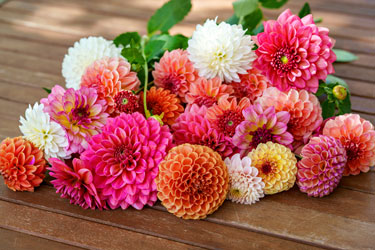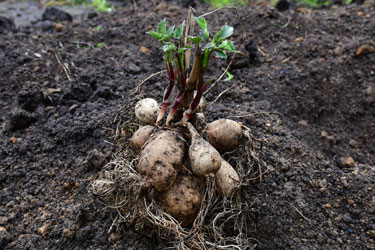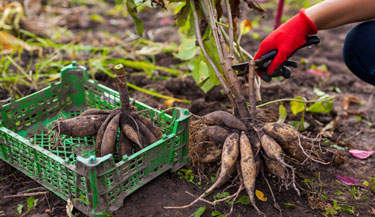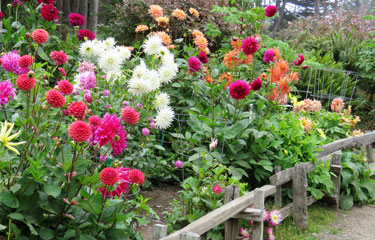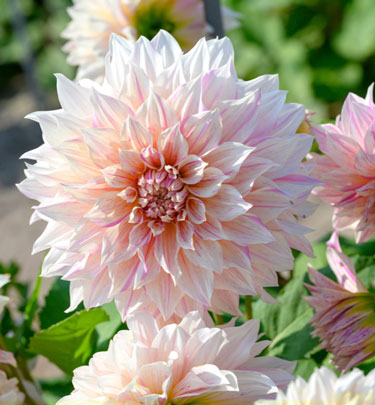Dahlia delight
Dahlia tubers are planted while dormant in late winter. Lush new leaves and buds appear in spring to quickly form robust plants that carry on blooming from early summer to late autumn.
Preparing the soil
Choose a spot with well drained soil and at least five hours of sunlight per day, Dahlias love the sun! Tubers are susceptible to rot so avoid areas prone to water logging. Heavy soil can be amended with quality compost and coarse sand to improve drainage. Prior to planting, enrich the soil with a generous application of Blood & Bone.
Buying the best
By the end of July, dahlia tubers will have arrived in store. Buy them as soon as they arrive for the best choice of varieties—there is a wide selection of heights, shapes and dazzling colours to choose from. Look for firm, plump tubers free from signs of mould or damage.
Planting
New shoots are frost tender so if your garden is prone to frost, delay planting or protect with frost cloth. Plant the tubers 5-10cm deep and at least 30cm apart. Larger varieties will need support. Put stakes or wire hoops in at planting time to avoid damaging the tubers. Water thoroughly after planting. New dahlia shoots are delicious to slugs and snails so at the first sign of growth, sprinkle snail bait around your plants.
Feeding
Feed with Bulb Food when the shoots are above ground, and regularly during flowering, to guarantee plenty of blooms through the season.
Picking
Cutting flowers for the vase is best done in the morning, with a bucket of water on hand to pop the cut stems directly into. Dahlias don't continue opening after they have been cut so choose blooms that are fully open. Removing spent flowers (deadheading) is an easy job for a summer evening and encourages further flowering.
After flowering
At the end of autumn refrain from cutting the leaves until they have completely died back. Allowing the foliage to yellow and wither naturally replenishes the plant’s energy for the following year.
How to look after your dahlias through winter depends on where you live and how free-draining your soil is. The tubers will rot if too wet or are frozen, so if necessary dig the plant up at the first sign of frost, cut off old stems, then clean, dry and store them in a cool airy place, ready for replanting in spring. In milder regions, a thick layer of mulch (pine needles, straw, bark or leaf matter) over the dahlia bed will protect the tubers from freezing.
Large clumps of established dahlia tubers can be split when lifted to produce more dahlia plants for the garden. Keep part of the crown attached to the tubers as this is the growing point for the new plant.
TOP TIP
Increase the blooms on your plants with a little snipping! First, remove all but the five strongest shoots sprouting from the crown. This will encourage a strong vigorous bush with masses of blooms. Next, after the second set of leaves has grown, pinch out the tops of the new shoots. The shoots will form four flowering stalks instead of one so you will have a huge display of blooms for weeks on end!

1-Jun-2024
Dahlia flowers are many and varied in colour, size, and petal shape
Dahlia tubers ready for planting
Lifting and cutting back dahlia tubers for storing
A dahlia garden with wire hoops to support the plants
Caf� au Lait Twist
A selection of dahlia varieties

